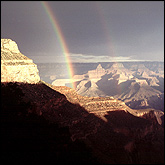- ۰ نظر
- ۰۸ ارديبهشت ۸۵ ، ۰۱:۳۴
فیزیک و تکنولوژی
آموزگار هستم. از آنجا که پروژه کارشناسی بنده حول ترجمه مقالاتی درباره ظهور اشعه ایکس و کاربردهای آن بود، این صفحه را ابتدا تحت عنوان اشعه ایکس در فروردین 1384 راه اندازی کردم. بعدها بخاطر نشر مطالب متفاوت و گوناگون به فیزتِـــک تغییر نام دادم. فیزتک از سرکلمه های فیزیک و تکنولوژی ساخته شده است.
/ پشتیبان دانش آموزان مدارس بین الملل
International School's Students Support
اسکرچ
Scratch
آموزش بازی سازی
آموزش اسکرچ
اشعه ایکس
رونتگن
کاشف اشعه ایکس
معرفی کتاب
فوتونیک
Photonics
مهبانگ
بیگ بنگ
Big Bang
ویلهلم کنراد رنتگن
قرص نیوتون
قرص بنهام
Newton's Disc
Benham's Disk
گندم
شطرنج
xray
کار و فن آوری ششم
ماکت
طراحی و ساخت
یک عاشقانه آرام
نادر ابراهیمی
طنز
داستان
معادله غیر خطی شرودینگر
سالیتون
- آبان ۱۴۰۴ (۱)
- مهر ۱۴۰۴ (۱)
- مرداد ۱۴۰۴ (۳)
- تیر ۱۴۰۴ (۲)
- ارديبهشت ۱۴۰۴ (۱)
- بهمن ۱۴۰۳ (۱)
- خرداد ۱۴۰۰ (۴)
- آذر ۱۳۹۹ (۲۹)
- شهریور ۱۳۸۹ (۱۰)
- دی ۱۳۸۸ (۱)
- مهر ۱۳۸۸ (۱)
- مرداد ۱۳۸۸ (۱)
- ارديبهشت ۱۳۸۸ (۱)
- آبان ۱۳۸۷ (۱)
- مهر ۱۳۸۵ (۱)
- تیر ۱۳۸۵ (۱)
- خرداد ۱۳۸۵ (۱)
- ارديبهشت ۱۳۸۵ (۱)
- فروردين ۱۳۸۵ (۱)
- اسفند ۱۳۸۴ (۱)
- شهریور ۱۳۸۴ (۲)
- مرداد ۱۳۸۴ (۱)
- تیر ۱۳۸۴ (۱)
- ارديبهشت ۱۳۸۴ (۱)
- فروردين ۱۳۸۴ (۲۱)
-
۰۴/۰۸/۲۴فرانکشتاین یا پرومته مدرن
-
۰۴/۰۷/۲۹از Westworld تا Don’t Worry Darling
-
۰۴/۰۵/۲۸گربه تیرانداز در اسکرچ
-
۰۴/۰۵/۱۷خود و ذهن
-
۰۴/۰۵/۰۴بازی حدس عدد
-
۰۴/۰۴/۱۱Supply and Demand problem
-
۰۴/۰۲/۳۰دانلود کتاب
-
۰۳/۱۱/۳۰ترسیم با معادلات ریاضی
-
۰۰/۰۳/۰۸Chapter 5.4 _ Longman Physics 11-14
- ۰ نظر
- ۱۷ فروردين ۸۵ ، ۰۰:۳۴
- ۰ نظر
- ۲۶ اسفند ۸۴ ، ۰۱:۳۳
|
وقتی در طول بارندگی فقط یک رنگین کمان می بینیم در واقع چند رنگین کمان وجود دارد؟ پاسخ این سؤال آنطور که فکر می کنید ساده نیست! وقتی نور وارد یک قطره آب می شود، در داخل قطره بازتاب کرده، و آنچه به چشم ما باز می تابد رنگین کمان را تشکیل می دهد. هر قطره باران، نوری را که واردش می شود در تمام جهات ممکن بازتابانده و می شکند. اولین بار که نور با قطره برخورد می کند، یک پرتو کسری از آن نور بازتاب می کند و و بقیة آن در طول قطره حرکت می کنند تا به پشت قطره از سمت داخل برخورد کنند. دوباره، مقداری از نور شکت خورده و مقداری بازتاب می کند. در هر برخورد با سطح سطح داخلی قطره، مقداری از نور باز می تابد و در قطره می ماند، و باقیماندة آن خارج می شود. بنابراین پرتو های نور می توانند بعد از یک، دو، سه بازتاب داخلی یا بیشتر از قطره خارج شوند. وقتی شما دو رنگین کمان می بینید، اولین یا اصلی ترین کمان در زاویة 42 درجه، با نور قرمز در بیرون و نور بنفش در داخل به طور واضح دیده می شود. کماان دوم همیشه کم رنگ تر بوده و بواسطة بازتاب دوم با رنگهای معکوس (بنفش در بیرون و قرمز در درون) در زاویة 51 تشکیل می شود. اسحاق نیوتن یک معادله ریاضی بر حسب اندازه زاویة رنگین کمانها بعد از بازتاب N اُمِ داخل قطره بدست آورد. او معتقد بود که در بازتاب سوم نور کافی وجود ندارد که در واقع شخص آنرا ببیند، از اینرو هرگز مسئله را برای 3=N حل نکرد. ادموند هالی، بعد از نامگذاری ستارة دنباله دار هالی، محاسبات را بر دوش گرفت و کشف کرد که سومین رنگین کمان در زاویة 40 درجه و 20 ثانیه تشکیل می شود، و شگفت زده شد. این رنگین کمان نبایستی در مقابل خورشید تشکیل شود بلکه دور تا دور خورشید تشکیل می شود! دو هزار سال بود که بشر به اشتباه در طرف دیگر آسمان در جستجوی این کمان بود. | |
Somewhere Over Which Rainbow? | |
How many rainbows are there really when we only see one during a rainstorm? The answer isn't as simple as you might think! Rainbows are formed when light enters a water droplet, reflects once inside the droplet, and is reflected back to our eyes. Each raindrop reflects and refracts the light that enters it in all possible ways. When light first hits the drop, a fraction of that light is reflected and the rest is transmitted through until it hits the backside of the drop on the inside. Again, some of that light is refracted and some is reflected. At each encounter with the surface inside the drop, some of the light is reflected and remains inside the drop, and the rest escapes. Therefore, light rays can escape after one, two, three or more internal reflections. When you see two rainbows, the first or primary bow at 42 degrees, is brighter with red on the outside ending with violet on the inside. The secondary bow at 51 degrees is always fainter with the colors reversed due to the second reflection; violet on the outside ending with red on the inside. Isaac Newton derived a mathematical equation for the angular size of rainbows after a number (N) of reflections inside the droplet. He never solved the problem for N=3, since he decided that in the third pass there wouldn't be enough light for a person to actually see it. Edmund Halley, after whom Halley's comet was named, carried the calculations through and discovered that the tertiary rainbow would actually appear with an arc of 40 degrees and 20 seconds, and surprise! It should appear not opposite the sun but around the sun itself! For two thousand years, men had been looking for this arc in the wrong part of the sky! | |
|
نحوه تشکیل دو رنگین کمان
|
- ۰ نظر
- ۱۸ شهریور ۸۴ ، ۰۱:۳۹


